Joshua Logan Younger – An American Patriot
Born: 11 May 1755 – Hampshire County, West Virginia, Colonial America
Died: 2 Aug 1834 – Bedford, Lawrence County, Indiana, United States of America
Joshua Logan Younger was the grandson of Humphrey Younger and his wife, Elizabeth (evidence indicates her surname was “March” as her father, Dr. John March, names Humphrey in his Will), by their son John W. Younger and his wife, Sarah Kennard (one researcher insists England was her surname although most have accepted Kennard as fact for as long as your author has been researching – more than two decades). He was born 11th May 1755 in Hampshire County, West Virginia in Colonial America. Most family researchers agree he had five brothers and one sister, the uncertainty arising from the dearth of documentation from so long ago. Most known wives’ and children’ names are gleaned through the study of Deeds where the wife would be a signatory or Wills where the living offspring would be left a bequest or, occasionally, specifically excluded from heirship. (Deeds can provide clues when the heirs later sell all or a portion of the inherited property. Especially helpful is when the property has been given a name, as is the case with Humphrey Younger’s estate which he called “Sole.”) Although the documentation is sparse and researchers provide varying dates of birth, most agree Joshua’s siblings were: John (b. 1740, d. about 1789); Joseph (b. 1742, d. 1790); Thomas (b. about 1748, d. date and place not yet confirmed); Elizabeth (b. 1750, death place and date not known); Lewis (b. 1752, d. ?); and Kennard (b. 1760, d. 1851.) Other researchers attribute other Younger males to this family, but my research does not provide sufficient justification for me to do so. Of note is the youngest son being named Kennard, possibly paying homage to his mother’s family name.
The Younger family at the time of his birth was living in an area where colonists were involved in the French and Indian War. The homesteads carved out of the wilderness in this new country comprised valuable land – land desired by more than one European country. The French and the English were engaged in war over the land and each had enlisted the aid of tribes they felt were either friendly to their cause or eager to barter in exchange for terrorizing the colonists. It was a time of turmoil and great challenges.
When he was but a ten-year-old boy, the colonists were already feeling the oppression of British rule. The outrageous taxes being levied on every good or activity was stifling. One of the more outrageous was the Stamp Act of 1765:
“The Stamp Act was passed by the British Parliament on March 22, 1765. The new tax was imposed on all American colonists and required them to pay a tax on every piece of printed paper they used. Ship's papers, legal documents, licenses, newspapers, other publications, and even playing cards were taxed.”
The condemnation of this overreach affected not only the early American colonists, but even the people of England. This gave rise to one of the most often repeated anthems, one that found its way into the discussions that gave rise to the Declaration of Independence and was a rallying cry: “No taxation without representation!” Undoubtedly, Joshua and his family were affected and these events would feed his passion for independence.
Little is known of Joshua until 1772, when at the tender of age of 17 he married Elizabeth Virginia Lee in Kentucky where both were then residing. This marriage may well be one of the most discussed and researched among the family historians of the Younger Gang. For Elizabeth Virginia Lee was reputed to be a daughter of the famous Lee Family of Virginia, whose sons included General Robert E. Lee, Richard Henry Lee and his brother Frances Lightfoot Lee both of whom signed the Declaration of Independence, and their cousin Light Horse Harry Lee. Each of these men have been assigned paternity by various and sundry researchers. “The source of this information was a letter written by Cole Younger from Stillwater Prison to Hon. W.R. Marshall, Gov. of Missouri. Quote: "My grandfather Charles Younger was born in 1783-4 and he was the third and youngest child by my great grandfather's first wife who was a Miss Lee of Virginia."
SOURCE: Posting to RootsWeb by Wilma C. Hillman, 21st June 2001)
Your author’s personal research has seemed to support Elizabeth Virginia Lee, first wife of Joshua Logan Younger, as being the child of Richard Henry Lee and wife, Anne Aylett. A daughter named Elizabeth was born to that union in 1755, but is listed as having died as an infant. Our Elizabeth died by all accounts 15 Sep 1787 in Lancaster, Lancaster County, Virginia, at the age of 32. The 1755 birth would have preceded the marriage of Richard Henry and Ann by some two years. It was not unusual for couples to post their bans of intent to wed, then live together until a traveling minister could perform the wedding ceremony. This, however, would certainly not have been the issue for the prestigious Lee family. The Lee Family of Virginia dismisses the idea of Elizabeth Virginia Lee being Richard Henry’s daughter on the basis of her not being included in his Will. That argument, however, does not hold water with your author in that she pre-deceased her father, had moved away from the family home, and her widower had remarried to another. It is also quite possible her marriage to Joshua had not been sanctioned by her father. Having recently invested in a DNA test that offers notification of matches to present day cousins or other relatives, a number have come back showing links to others who believe their lines descend from the Lees of Virginia. This would seem to support the claim of many family historians that we might, indeed, claim descent. Only time will tell as no documentation has yet been located other than family records and claims such as that made by Cole Younger. A mystery yet to be solved.
The names and dates of birth of the children of this union change depending upon the source - family tree, forum reply, and so forth. We can, however, be certain of two things: a) Joshua Logan Younger is an acknowledged Revolutionary War Patriot with much documentation to support that including his accepted Pension Application, Muster Rolls, a signed Certificate of Discharge from Colonel James Wood among other things; and b) many desiring to become part of the exclusive Daughters (or Sons) of the American Revolution will attempt to propose an ancestor with direct lineage to a Patriot in order to gain membership. Thus, we have encountered no less than some 30 children attributed to Joshua by his two wives!
Of certainty, the following are generally accepted as having been sired by Joshua: by first wife, Elizabeth Virginia Lee, although the vital dates for many are unconfirmed: Sarah “Sallie” (b. 1771), Elizabeth “Lizzie” (b. 1772, m. John Mack Lewis; d. 1859); Peter Logan (b. 1772 a twin to Lizzie? m. Abigail Dennis 1798, d. 1841), Charles Lee (our line, b. 1 Jan 1783, m. (1) Nancy Toney 13 Apr 1798 where Peter Younger put up the bond and consent to marriage was supplied by fathers Joshua Younger and Elexander Toney, m. (2) Sarah Sullivan Purcell 21 Aug 1807, d. 12 Nov 1854); a mere 9 months later records show sister Amelia Ann arrived (b. 26 Oct 1783, m. Isaac Hardin about 1802 in Kentucky, d. 27 Oct 1839 about 2 weeks following death of her husband). Additionally, other researchers show children to be: Joshua, Isaac, Sr. (b. 1775, d. 1847); Henry, Sr. (b. 1775, m. Ruth Gatch, d. 1829); David (b. 1776, d. ?); Andrew (b. 1781, d. ?); Rachel (b. 1782, d. ?); and Littleton (b. 1784, d. ?). All of these children may have been added by mistake to the line. Some may have been the offspring of other Younger males but accidentally attributed to Joshua and Elizabeth Lee Younger.
The children born to Joshua’s second marriage to Catherine Yoder following the death of first wife, Elizabeth, are more easily confirmed as documentation exists. Nimrod (b. 1790, d. 1860); Mary “Polly” (b. 1793, m. William Rabourn in 1811 in Kentucky, d. 1880); John (b. 1795, m. Elizabeth Kern in 1818; d. 1833); Stever (b. 1799, m. Sarah Kern in 1819; d. 1893. No children of this union); Lewis (b. 1803; m. Nancy Crose; d. 1890, 12 children); and Garrett (b. 1806, m. Polly Parrish in 1829; d. 1872).
In January of 1777, according to the Pension Application filed on behalf of Joshua, he enlisted for the duration of the war in Capt. William Vause’s Company, attached to the 12th Virginia Regiment commanded by Colonel James Wood. From that date through his continued service, he would be assigned to various Regiments (the 4th, 8th and 12th in whatever configuration best suited the strategic plans of Col. Wood) as evidenced by an examination of the Muster Rolls and Payroll documents on file. The actual text of his Pension Application reads as follows:
“Enlisted January 1777 in Capt. William Vause’ in the 12th Virginia Regiment an Continental establishment appointed and Commanded by Colonel James Wood and that he belonged to Capt. William Vaus’s Company and to the Brigade Commanded by General Scott and that he continued to serve in said Regiment and army until some time in May One Thousand Seven hundred Seventy Nine at which time he was discharged on account of having received a wound in said service.”
It may be assumed these Virginia Regiments, newly organized of farmers and frontiersmen spent a few months arming, drilling, training, and marching to their designated locations as directed by Colonel Wood. It was not until 11th September 1777 that the 12th Virginia Regiment engaged British troops near Chadd’s Ford Township in Pennsylvania, known as the Battle of Brandywine (or Brandywine Creek). American troops were under the command of General George Washington. This battle has been called “the most controversial battle of the Revolutionary War” for a number of reasons: More troops fought in this battle than in any other battle of the American Revolution, some 20,300 American forces under Washington’s command situated from Head of Elk to Philadelphia. On the day of battle, the Continental Army had amassed about 14,600 troops while the combined British and Hessian troops numbered 15,500. It is further distinguished as the longest single-day battle of the War, with “continuous fighting for 11 hours”. The British troops were commanded by General Sir William Howe and this battle has been noted as one of Howe’s “finest moments as a tactician and one of his most scrutinized.”
(SOURCE: http://thehistoryjunkie.com/revolutionary-war-battles/). The controversy arises from Howe’s failure to move rapidly to aid Burgoyne further north. He would ultimately resign following his Philadelphia Campaign.
|
General Washington’s defeat by General Howe, precipitated by poor scouting that permitted Howe’s troops to attain a position at the rear of Washington’s right flank, did little to gain Washington’s leadership credibility. Washington’s troops were forced to withdraw toward Philadelphia and a complete rout was only avoided by a timely rear guard action by Major General Nathaniel Greene.
(SOURCE: http://www.wikiwand.com/en/Brandywine_order_of_battle).
This battle was followed shortly by the Battle of Paoli on the 20th September and in another brilliant move, General Howe outmaneuvered Washington and seized Philadelphia (at that time the capital of the United States) on September 26.
By October of 1777, Howe had set his eyes on occupation of the American capital. He split his troops, a garrison to defend the capital while he moved the bulk of his troops to an outlying community known as Germantown. There, the Brits occupied a large residence known as the Benjamin Chew House. This time Washington’s scouts proved their worth. Washington determined to attack Howe’s troops while the force was split.
“After dusk on October 3, the American force began the 16 miles (26 km) march southward toward Germantown in complete darkness. To differentiate friend from foe in the darkness, the troops were instructed to put a piece of white paper in their hats to mark them out.[7]The Americans remained undetected by the Jäger pickets, and the main British camp was, subsequently, unaware of the American advance. For the Americans, it seemed their attempt to repeat their victory at Trenton was on the road to success. However, the darkness made communications between the American columns extremely difficult, and progress was far slower than expected. At dawn, most of the American forces had fallen too short of their intended positions, losing the element of surprise they otherwise enjoyed.” (SOURCE: http://www.wikiwand.com/en/Battle_of_Germantown)
It was unfortunate that a heavy fog worked against the Continental troops on the morning of 4th Oct, sending them into a state of confusion that pitted Anthony Wayne’s division to mistake Nathaniel Green’s approaching wing as enemy combatants. The two Continental forces attacked one another for a period of time. This permitted Howe’s forces ensconced in the Chew House and operating from the higher position coupled with the Hessian guard flanking the left, to impose severe casualties on Washington’s forces.
|
In spite of the defeat, the brilliance of Washington’s strategic moves and the courage of his fighting men inspired France, long desirous of driving the Brits from the New World, to offer both monetary and military aid to the Continental Army.
General George Washington, following the Battle of Black Hill (Edge Hill), sought winter quarters for his army at Valley Forge, Pennsylvania. Strategically located to offer a superior defensive position, the higher ground surrounding the camp also provided a means to keep an eye on the British and prevent incursions by them into interior Pennsylvania.
|
The 12th Virginia Regiment would enter Valley Forge with 495 assigned and 164 fit for duty, among them our Joshua Logan Younger. Designated as Lafayette’s Division, Scott’s Brigade, the 12th’s Field Officers were Colonel James Wood, Lt. Colonel John Neville and Major George Slaughter. Its Company Commanders were Captains Andrew Waggoner, Steven Ashby, Michael Bowyer, Thomas Bowyer, Benjamin Casey, Rowland Madison, William Vause, and Andrew Wallace. The Regiment’s previous engagements included Northern New Jersey, the Defense of Philadelphia, and the Philadelphia-Monmouth battles previously described. The men would leave Valley Forge aligned with the 4th and 8th Virginia Regiments, also under the command of Colonel James Wood. (*)
Conditions were harsh when the men arrived December 19, 1777, but within three days the first log hut had been built. The men were resourceful and quick to build fortifications and shelter; however, the wet, damp weather created a perfect atmosphere for disease and discomfort. The relatively moderate winter still brought alternate freezing and melting of the ice and snow and food sources were scarce. Thanks, however, to the efforts of General Baker Christopher Ludwig, the men had fresh bread daily. Many of their horses died of starvation and hunger and the men fared little better, some 2,500 lost to typhoid, dysentery, and pneumonia. Disease was rampant and empty stomachs a constant pain. Many men deserted but those who stayed were toughened.
|
The Continental Army was unable to provide clothing or food, but female relatives of the men did what they could to feed and clothe the men. The men were poorly trained due to a lack of manuals and professional soldiers among their ranks. All that changed when Benjamin Franklin sent his friend Baron Friedrich Willhelm von Steuben to Washington at Valley Forge, along with his high recommendations. Baron von Steuben did not speak English, but the highly trained Prussian soldier (who had served on the elite staff of Frederick the Great) did speak French. Being so close to the French colony of Canada, many of the men in camp were able to convert his instructions, given in French, to English and create the much-needed training manuals. Baron von Steuben was a "hands-on" instructor whose loud commands could be heard ringing over the noise of camp as he drilled the crew of half-starved, dispirited men into a well-trained military command.
By the time Washington's army emerged June 19, 1778, six months after their arrival, they were able to respond to commands quickly, fire their muskets with efficiency and had learned to alternate shots so as to maintain a barrage of fire while the awkward firearms could be re-loaded by half the men while the other half fired their just-loaded weapons. The army marched off in pursuit of the British as the Brits moved toward New York. The war would last another five years, but the men of George Washington's army had gained a huge victory at great cost during their winter at Valley Forge. From a group of bedraggled, ill-trained men to a finely tuned army with high morale and a group of some 500 camp followers who helped maintain morale and health, they would go forward to win the battle for independence, the Revolutionary War. (SOURCE: https://en.wikipedia.org/wiki/Valley_Forge)
Additional Battles Fought by the 4th, 8th and 12th Virginia Regiment of Foot - 1778-1779: (SOURCE: http://thehistoryjunkie.com/revolutionary-war-battles/ )
- 28th Jun 1778 – Battle of Monmouth, Continental Army under
General George Washington engaged the British Army commanded by Lt. Gen.
Sir Henry Clinton
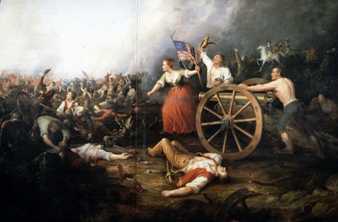
Battle of Monmouth - June 28th, 1778 - 3rd Mar 1779 – Battle of Brier Creek
- Early May 1779 – Battle of Chillicothe
- 10th – 24th May 1779 – the Chesapeake Raid
After more than two years engaged in the arduous fight for independence, engaged in some of the most noted battles of the Revolutionary War and serving constantly under the command of General George Washington, Joshua – unbeknownst to him – was approaching his personal conclusion of the War for Independence. He had bravely faced the most horrendous conditions, endured bouts of sickness that forced him to take furlough, and had come back from injuries to continue fighting. Then, in a skirmish so unremarkable it gains no lasting tale in the history of the Revolution, he was injured so badly his leg ruptured, leaving him “unfit for service.” He would take a few months at Camp Middlebrook while he recuperated sufficiently to make it home. He would no longer be able, however, to tend his farm and would, ultimately, be forced to apply for the pension in order to make ends meet. He and Catherine would live with one or another of their grown children and subsist on the small pension.
Researched and Compiled by Melinda Cohenour






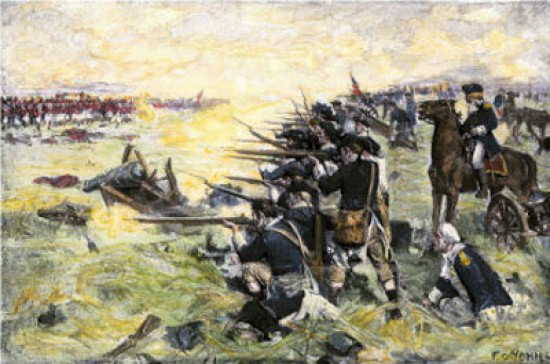
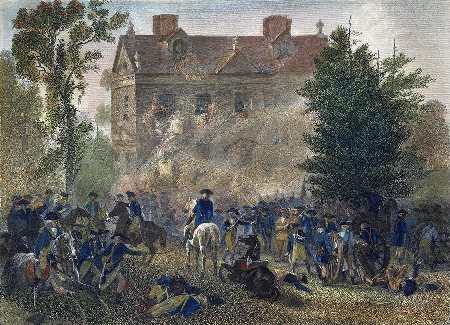
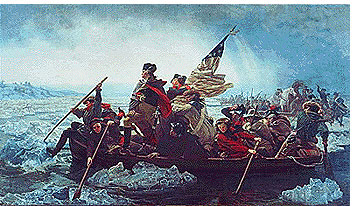
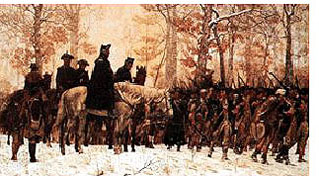
No comments:
Post a Comment